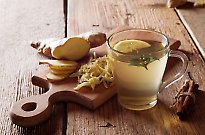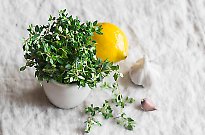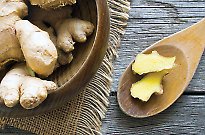
What is jamu?

Understanding the Indonesian art of herbal healing.
As our nearest Asian neighbours, there’s a lot of wisdom to be gained from Indonesia – particularly when it comes to health and wellness. Janella Purcell travels to Bali to share in the secrets of jamu, a traditional healing methodology that relies on herbs and lotions and potions to cure all manner of illnesses.
Life in Indonesia is steeped in superstition and the locals know that herbs alone cannot always cure. Sometimes prayer and ritual are the answer, and in cases of a persistent illness, people often turn to magic. Jamu healers use a combination of medicine, prayer, massage and magic. The healer matches the vibrations of his or her mind with those of the patient. He/she is then literally on the same wavelength as the patient, and Indonesians believe they can send vibrations or read the patient’s thoughts. The crucial spot for the healer is the third eye, at the centre of the forehead.
Being ill in a spiritual sense is an ailment for which the average Westerner would not take medicine, but according to both the Javanese and Balinese understanding of ‘health’, there are many different cures, just as there are many different causes.
Jamu has been a closely guarded secret until recently. It not only relies on herbal medicine, massage, prayer and magic, it encompasses pills, powders, ointment, lotions and ancient folklore.
The healers in Indonesia come from all walks of life and have extraordinary skills; some are born with the gift, others develop it throughout their life. Generally they rely on a sense of touch, personal experience and lots of herbs and spices. The fee is often left up to the patient, and it can take as long as 30 years to become a competent healer.
The all-powerful instrument is the mind, and because it controls the body, healers believe that many illnesses are created by mental imbalance alone. The healer passes positive thoughts on to their patient, thus aiding the healing process. Trances, meditation and mysticism – which form an important part of healing in Indonesia – are awe-inspiring, impressive and even a little bit scary at times.
Jamu originated on the island of Java, and as the story goes following the adoption of Islam in the late 15th century, many fled to Bali, taking their books, culture and customs with them.
In jamu, all concoctions are simple, practical and rarely expensive. The plants used for medicinal purposes in Indonesia date back to prehistoric times. Tools such as mortars or rubbing stones are used to grind plants to obtain powders and plant extracts.
So what’s in jamu?
By and large, jamu uses up to 213 medicinal plants. A handful of species are the undisputed superstars and they belong to the ginger and turmeric family.
Nutmeg: One of Indonesia’s most famous trees, nutmeg is regarded as more of a medicine than a spice.
Used for: Headaches, diarrhoea, muscle pain, rheumatism
Camphor: This precious liquid is also accepted by Western medicine as a mild antiseptic and anaesthetic.
Used for: Stimulating heart and blood circulation
Ginger: There are around 200 species different in shape, colour, flavour and curing abilities. Many of these appear on the WHO’s (World Health Organization) list of the most popular medicinal plants used in 23 countries. Most common is ginger officinale.
Used for: Nausea, inflammatory conditions, joint aches, period cramps, arthritis, intestinal irritability
Turmeric (Curcuma domestica): Turmeric has been adding flavour to food for thousands of years. It’s considered sacred in the East as it symbolises the sun – the source of light, energy and growth. It’s also widely believed to offer protection against evil spirits. Turmeric is found in practically every jamu formulae and covers everything from radiant skin, slimming, rejuvenation, post-natal, and a treatment for hair, poultices, and compresses that cleanse and deodorise. It also goes into jamu asih kinasih, the love potion that is said to bring a whole new meaning to the word lovemaking. Science has now proven that curcumin has anti-mutagenic properties and can help protect living cells from substances that cause cancer. It functions like an antioxidant. With or without this evidence, Indonesians have always valued turmeric.
Used for: Stomach ache, diarrhoea, painkiller, blood cleanser, improve circulation, wound healing, relieve itchiness, ulcers, abscess. Treats asthma, angina, hypertension, fever, cracked skin, eczema, dysentery and arthritis.
Galangal (laos): Marco Polo told us that the Javanese grew and supplied galangal to the spice traders in the 13th century.
Used for: Diarrhoea, indigestion, stomach aches, diarrhoea, flatulence, aphrodisiac
Papaya: Has strong digestive power thanks to an enzyme called papain. It can digest up 35 times its weight of lean meat. The boiled leaves clean the blood, improve the taste and flow of mother’s milk, and the roots are used for tumours in the uterus, to help control excessive bleeding and remove kidney stones.
Used for: Wind, flatulence, heartburn, bad breath, bloating, headaches, abdominal pain
Tamarind: Although the entire plant is poisonous, its medicinal use is widespread. The young leaves are applied topically and are a good source of vitamin B, while the pulp (not poisonous and used in cooking) is cooling.
Used for: Skin diseases, ulcers, rheumatism, laxative
Kancun or Kangkung: A green leaf water spinach loved by Indonesians (and me), it’s as important in their diet as pasta is to Italians. This liver-loving veg is full of vitamins and minerals including folate, magnesium, fibre, iron and calcium. Leaf tips are used in salads but more often the whole kangkung is cooked and served as a side to main dishes and/or rice.
Used for: Laxative, piles, insomnia, headaches caused by nervousness, white vaginal discharge, gum problems, cold sweats.
Discover more healing herbs here.


